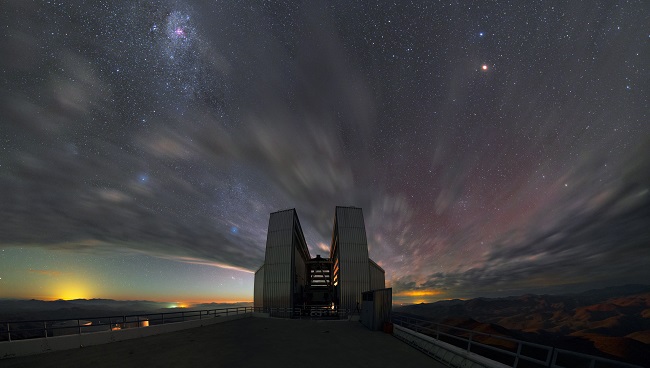An artist's impression shows exocomets orbiting the star Beta Pictoris. Image via ESO/L Calçada
One thousand catalogued observations of the star Beta Pictoris over an eight-year period have shown the young system to have two families of comets surrounding it.
At 20m years old, Beta Pictoris is an infant in terms of the timeline of the universe. The star has interested researchers for the last 30 years after initial observations showed signs, such as different changes in light, that a number of comets passed in front of the star on a regular basis.
With the HARPS instrument on the ESO 3.6-metre telescope at the La Silla Observatory in Chile, the team sampled 493 different exocomets, some of which were observed several times and for a few hours.
After going through their data, the team members’ findings revealed the presence of two distinct families of exocomets: one family of old exocomets, whose orbits are controlled by a massive planet, with another family probably arising from the recent breakdown of one or a few bigger objects.

Clouds over the La Silla Observatory in Chile. Image via Y Beletsky (LCO)/ESO
The first family of comets appears to show they are significantly older than the second family of comets, as activity on them appears weak, indicating vast amounts of ice and dust has been burned off on its many rotations around the star.
Lead author of the study, Flavien Kiefer, said for the first time, a statistical study has determined the physics and orbits for a large number of exocomets.
“This work provides a remarkable look at the mechanisms that were at work in the solar system just after its formation 4.5bn years ago,” Kiefer added.
Don’t miss our Innovation Ireland Forum on 24 October in the Guinness Storehouse, Dublin